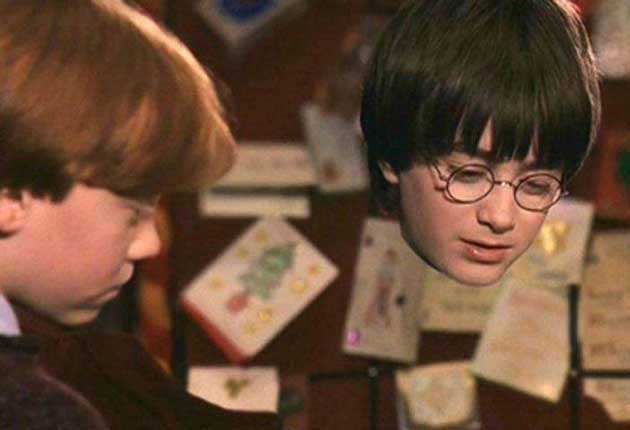Your support helps us to tell the story
From reproductive rights to climate change to Big Tech, The Independent is on the ground when the story is developing. Whether it's investigating the financials of Elon Musk's pro-Trump PAC or producing our latest documentary, 'The A Word', which shines a light on the American women fighting for reproductive rights, we know how important it is to parse out the facts from the messaging.
At such a critical moment in US history, we need reporters on the ground. Your donation allows us to keep sending journalists to speak to both sides of the story.
The Independent is trusted by Americans across the entire political spectrum. And unlike many other quality news outlets, we choose not to lock Americans out of our reporting and analysis with paywalls. We believe quality journalism should be available to everyone, paid for by those who can afford it.
Your support makes all the difference.From Grimm's fairy tales to Harry Potter, the cloak of invisibility has helped out of many a fictional hero. Now scientists have taken a vital step towards turning that most surreal of sartorial selections into reality.
A significant step, yes, but a very small one: about 0.00005 inches in fact. Researchers at Karlsruhe Institute of Technology in Germany say they have rendered (almost) invisible a bump in a layer of gold measuring 0.00004 inches high by 0.00005 inches across, by "cloaking" it in a new material.
The "cloak" is a structure of crystals with air spaces in between, almost like a pile of logs, which is able to bend light. When placed over a small layer of gold, the tiny bump could not be detected at infrared frequencies – very near to the spectrum of light visible to humans.
Crucially, this new "metamaterial" – artificially engineered to have properties not found in nature – was able to disguise the bump in three dimensions. Previous "cloaks" have hidden objects when looked at head-on, but did not work if viewed from the side.
While in this case the bump was so tiny that a magnifying lens was needed to see it, the lead researcher, Tolga Ergin, told the US journal Science there was no reason why the technology could not be developed to make much larger objects vanish. "In principle, the cloak design is completely scalable; there is no limit to it," Ergin said. Developing the fabrication technology so that the crystals were smaller could "lead to much larger cloaks".
"The value of the finding is that we learn more about the concepts of transformation optics, and that we have made a first step in producing 3-D structures in that field," he said.
"Invisibility cloaks are a beautiful and fascinating benchmark for the field of transformation optics, and it is very seldom that one can foretell what practical applications might arise."
As yet, scientists have not been able to develop cloaking materials that make objects invisible to the eye, because visible light has shorter wavelengths that are more difficult to manipulate in the right way. Mr Ergin's cloak was designed to make objects invisible to infrared light, but it paves the way for more advanced materials capable of cloaking objects in visible wavelengths.
Cloaking deflects radar, light or other waves around an object, like water flowing around a smooth rock in a stream. It differs from the stealth technology used on some military aircraft, which does not make them invisible but merely reduces their size when picked up by radar. Professor Ortwin Hess, of Surrey University, said the German research was a "huge step forward", adding: "We won't have a body-sized invisibility cloak tomorrow but this has demonstrated a remarkable proof of principle."
0.00005
The width in inches of the sliver of gold rendered invisible by scientists at Karlsruhe Institute of Technology

Join our commenting forum
Join thought-provoking conversations, follow other Independent readers and see their replies
Comments